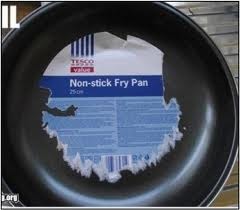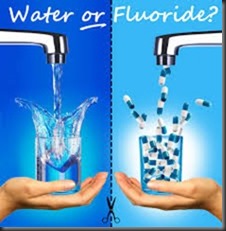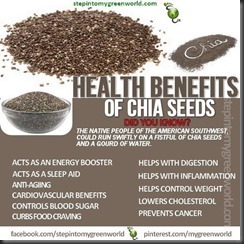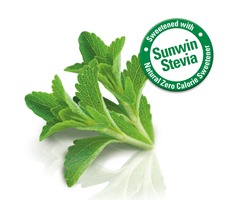 For most of us, the kitchen is the heart of the home. It’s where we gather together to nourish ourselves, and often where we spend the most amount of time.
For most of us, the kitchen is the heart of the home. It’s where we gather together to nourish ourselves, and often where we spend the most amount of time.
That’s why it’s important to go the extra mile and make sure toxins and poisons aren’t secretly getting into your body through the things you eat or drink and the tools you use to cook.
If you think the government doesn’t permit the sale of anything unsafe, think again. You may be ingesting toxins from some unlikely sources.
1. Scrap the toxin-heavy pots and pans
It’s a terrible thing to buy healthy food and cook homemade meals for your family only to have your efforts sabotaged by toxic cookware. But that’s exactly what can happen if you cook with non-stick, chemical-heavy surfaces like Teflon.
Just the fumes given off by a hot Teflon-coated pan can give pet birds such strong respiratory reactions they’ll keel over and die (as some unhappy parrot owners found out the hard way). And get this: When Teflon-coated heat lamp bulbs were installed in chicken pens, half the chickens died within a few days.
If a non-stick coating does that to birds, what is it doing to us?
Easy cleanup isn’t worth the risk of inhaling toxic gases, which include PFIB (a chemical warfare agent) and MFA (a gas that kills people at low doses). Plus, Teflon and similar non-stick coatings wear down as time goes by. Some of the chemicals go into the air, others get absorbed right into your food. You know those shiny spots on your skillet where the coating has worn off? You ate it.
It’s been alleged that Teflon causes cancer, fertility problems, and other health hazards. And PFOA (perfluororctanoic acid and also known as C8), a key ingredient in Teflon, is also a carcinogen that’s toxic to animals and persists in the environment indefinitely.
Companies like DuPont, manufacturer of PFOA-lined products like Teflon, are working on a “global phaseout” of the stuff. But even if such products are no longer available at stores, most people will have Teflon-lined cookware in their cabinets for years to come.
Clear your kitchen of toxic cookware now and toss anything with a non-stick coating. Instead, fill your cabinets with stainless steel pots and pans (including copper or aluminium pans, as long as they’re lined with steel). I also recommend enamelled or well-seasoned cast iron and porcelain cookware.
2. Splurge on organic, but not all the time
Sales of organic products have been climbing for years – and with good reason. It’s not a fad. There really are confirmed benefits to eating food grown without pesticides, herbicides, and chemical fertilizers. Pesticide residue lurks in all kinds of conventionally-grown foods, even after you take the time to wash them.
Problem is, you’ll pay a higher price if you buy only organic fruits and vegetables. Last time I checked, it was around 24 cents more per pound. Organic milk is almost twice the cost of regular milk.
And according to the American Journal of Clinical Nutrition, organic fruits and vegetables differ very little in nutritional value from conventionally grown produce. I question their finding, but no matter. It’s not about the nutrition level, folks. Or even the flavour, since many people say they can’t taste a difference between organic and conventional foods. It’s about keeping toxic additives out of your body.
I’m a big believer in buying organic food whenever possible. But if you’re looking to cut costs and still eat healthy, at least follow the guidelines published by the Environmental Working Group (EWG) annual report of the cleanest and dirtiest fruits and vegetables. The edible portions of some produce have pretty modest amounts of pesticide residue, while other types of produce retain heavier-than-normal levels of pesticides.
Here’s the list of which types of produce you should always buy organic, and which are okay if bought conventionally.
Dirty Foods (Buy Organic):
Peaches | Nectarines | Blueberries | Apples | Grapes | Cherries | Strawberries | Celery | Bell Pepper | Spinach | Kale and Collard Greens | Potatoes
Clean Foods (Ordinary Produce is OK):
Onions | Avocados | Sweet Peas | Sweet Corn | Asparagus | Cabbage | Eggplant | Sweet Potato | Cantaloupe | Pineapple | Mango | Kiwi Fruit | Watermelon | Grapefruit | Honeydew
I want to add that if you’re working on beating cancer with alternative health methods, I recommend going 100% organic. If you’re healthy and your goal is to prevent cancer, you can gain a lot of benefits from a diet that’s maybe 80% organic. Either way, every step counts. It’s better to eat half organic, half conventional, than to eat 100% conventional.
3. Filter, filter, filter.
It may have been done with the best of intentions, but government-mandated additives in your water supply are probably causing more problems than benefits.
 Fluoride is a top offender. Initially touted as a way to prevent tooth decay, this chemical is added to 70% of tap water in the United States. But fluoride – a toxin – isn’t meant to be ingested. It accumulates in your body over time and has been linked to osteoporosis, birth defects, and disruption to your endocrine system, especially in the thyroid.
Fluoride is a top offender. Initially touted as a way to prevent tooth decay, this chemical is added to 70% of tap water in the United States. But fluoride – a toxin – isn’t meant to be ingested. It accumulates in your body over time and has been linked to osteoporosis, birth defects, and disruption to your endocrine system, especially in the thyroid.
And fluoride isn’t the only potentially toxic waste product that makes its way into your water supply. Out-dated water filtration systems, treatment processes, and source water contaminants may be leeching chemicals and metals into your drinking water without you knowing it.
To avoid these risks, either install a reverse osmosis water filter in your home, or buy filtered water – just make sure you verify that it’s fluoride-free.
4. Scrap this potentially poisonous colour habit.
Walk by any baked foods department in the grocery store and you’ll see a rainbow of colours in the icing, cookies, and cakes section – especially if there’s a holiday coming up (have you seen those black and orange-iced cupcakes for Halloween? Or the electric green icing for St. Patrick’s Day?)
 Dyes are used to make our foods look more attractive, but what they really do is make our foods poisonous. Worst of all, the most colourful baked goods – like cakes with vividly coloured Spidermans and princesses – are meant for kids, who are more vulnerable than adults when it comes to toxic loads!
Dyes are used to make our foods look more attractive, but what they really do is make our foods poisonous. Worst of all, the most colourful baked goods – like cakes with vividly coloured Spidermans and princesses – are meant for kids, who are more vulnerable than adults when it comes to toxic loads!
The dye Red 3 has actually been identified as a carcinogen by the FDA, but is still used commercially. Yellow 5 and Yellow 6 are also contaminated with cancer-causing agents. Blue No. 1 and Green No. 3 are no better. And even those colourings considered “natural” contain potential carcinogens. Two of the four types of caramel colour contain something called 4-MeI, which poses a small cancer risk.
The easy answer is to read labels and stay away from anything with food colourings and dyes. If you want to colour your food, turn to safe alternatives like blueberry juice concentrate, carrot juice, paprika, grape skin extract, beet juice, purple sweet potato, corn, and red cabbage.
5. Line your cupboards with these power foods.
Even while the toxic loads in our soil and water systems are increasing, so is our knowledge about the powerful nutritional options we enjoy as part of modern living. Pack your cupboards with these two cancer-fighting, nutritional dynamos:
 Chia seeds. Bursting with omega-3 and omega-6 fatty acids, they help lower your risk of heart disease and play a role in cancer prevention. Sprinkle them on everything from salads to frozen yogurt.
Chia seeds. Bursting with omega-3 and omega-6 fatty acids, they help lower your risk of heart disease and play a role in cancer prevention. Sprinkle them on everything from salads to frozen yogurt.
Cinnamon. Recently called “one of Mother Nature’s cancer-fighting superfoods,” cinnamon helps balance blood sugar levels. And since high blood sugar levels are often found in those who suffer pancreatic cancer, urinary tract cancer, and malignant melanoma, there’s good reason to keep them in check. Cinnamon also appears to halt cancer growth. Eat a half-teaspoon daily. Sprinkle it on your toast, cereal, yogurt, or smoothie – whatever. Make it a habit.
6. Kick the sugar addition.
I know what you’re thinking – easier said than done. But when you consider the significant threats sugar introduces to your body, from weight gain to insulin problems, and add to it the fact that sugar feeds cancer… it’s worth taking up the challenge. If you want to avoid OR treat cancer, giving up sugar may be the best single thing you can do. Here are a few simple changes you can make to everyday meals:
Replace syrup with fruit sauce. Syrup feels like a must with some of our breakfast foods, but unfortunately it comes with a heavy sugar load and the added risk of carcinogens from the caramel food colouring (if you don’t eat real maple syrup). Take five minutes to simmer berries or bananas, possibly with a teaspoon of cinnamon for flavour and corn starch to thicken the sauce, and you get a flavourful, healthy topping for your pancakes and waffles.
 Choose natural soda over cola – if you MUST have soda. Dark-coloured soda pops are offenders of the same breed as syrup – heavy on sugar with potentially toxic food colouring. Natural, clear sodas have less than half the sugar and no food colouring. Better yet, get your own soda water maker and squeeze in fresh fruit juice to satisfy your soda craving.
Choose natural soda over cola – if you MUST have soda. Dark-coloured soda pops are offenders of the same breed as syrup – heavy on sugar with potentially toxic food colouring. Natural, clear sodas have less than half the sugar and no food colouring. Better yet, get your own soda water maker and squeeze in fresh fruit juice to satisfy your soda craving.
- Use stevia as your sugar substitute. When you have to eat something sweet, stevia is the best option. It’s better than all the artificial sweeteners out there, and better for your body than pure sugar. I recommend growing your own and crumbling the leaves for a sweetening effect. If you buy it, just make sure to get 100% pure stevia extract with no added ingredients.
These steps may sound small, but they all add up to a strong defence against cancer – not to mention feeling better and healthier on a daily basis!
By Lee Euler: Is your frying pan giving you cancer?
References
http://www.cancerdefeated.com/best-tips-for-avoiding-toxins-in-pots-and-pans-2/1311/
http://www.cancerdefeated.com/newsletters/Cookware-That-Will-not-Leech-Poison-into-Your-Food.html
http://www.cancerdefeated.com/newsletters/Teflon-Update-Worse-than-We-Thought.html
http://www.cancerdefeated.com/newsletters/Teflon-Right-now-is-fatal-to-birds-who-is-next.html
http://www.cancerdefeated.com/is-your-stack-of-pancakesincreasing-your-cancer-risk/2657/
http://www.cancerdefeated.com/is-your-water-supply-being-poisoned-by-the-government/569/
http://www.cancerdefeated.com/newsletters/What-is-chemo-brain-and-how-to-avoid-it.html
http://www.cancerdefeated.com/popular-food-dyes-carry-profound-cancer-risks/2572/
http://www.cancerdefeated.com/is-beating-cancer-as-easy-as-eating-apple-pie/2736/
http://www.cancerdefeated.com/is-stevia-really-as-healthy-as-they-claim/2827/
